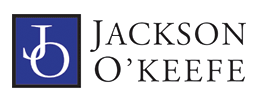The plaintiffs commenced this action seeking underinsured motorist coverage benefits from four insurers, including the…
Insurance Coverage: University employee operating rental vehicle is found to be covered by university’s uninsured/underinsured motorist benefits

In this action to recover underinsured motorist benefits, the insured-plaintiff appeals from the judgment of the trial court rendering summary judgment for defendant, Phoenix Insurance Company. On November 16, 2017, the plaintiff was operating a rental vehicle on her way to an off-campus event as part of her duties for the university when her vehicle was struck from behind by another vehicle. The plaintiff suffered various injuries and received $250,000 from the tortfeasor, exhausting the tortfeasor’s liability coverage. At the time of the accident, the university’s insurance policy provided underinsured motorist coverage with a limit of $1 million per person. The plaintiff alleges that the vehicle she was operating at the time of the accident was insured under the university’s policy. The defendant moved for summary judgment. The trial court granted the defendant’s motion.
On appeal, the plaintiff claims that the court improperly rendered summary judgment for the defendant because (1) the court’s construction of the university’s policy violates General Statutes § 38a-336(a)(2), (2) the plaintiff is entitled to underinsured motorist benefits pursuant to the policy’s business auto extension endorsement, and (3) denying the plaintiff underinsured motorist benefits would violate public policy. Pursuant to § 38a-336(a)(2), an automobile liability insurance policy must “provide uninsured and underinsured motorist coverage with limits for bodily injury and death equal to those purchased to protect against loss resulting from the liability imposed by law unless any named insured requests in writing a lesser amount, but not less than the limits specified in subsection (a) of section 14-112.” Thus, the court must consider whether the plaintiff is an insured under the policy for purposes of liability coverage, as that is a necessary predicate to her claim pursuant to the statute.
The Business Auto Coverage Part Declarations provides that “the Commercial Automobile Coverage Part consists of these Declarations and the Business Auto Coverage Form shown below.” Item two of the declarations sets forth the coverages and limits of insurance, explaining that “coverage applies only to those ‘Autos’ shown as Covered ‘Autos.’ ‘Autos’ are shown as covered ‘autos’ for the applicable coverages by the entry of one or more of the symbols from Section 1—Covered Autos of the Business Auto Coverage Form next to the name of the coverage [covered auto symbol].” Among the policy endorsements is the business auto extension endorsement, which modifies paragraph A 1 of section II of the business auto coverage form and adds the following provisions: “An ‘employee’ of [the university] is an ‘insured’ while operating an ‘auto’ hired or rented under a contract or agreement in an ‘employee’s’ name, with [the university’s] permission, while performing duties related to the conduct of [the university’s] business.” Therefore, the court concludes that the plaintiff is an insured for purposes of liability coverage.
The court turns to the plaintiff’s claim that, in the absence of a waiver by the university, § 38a-336 mandates that she also be insured for underinsured motorist coverage. State laws require all motor vehicle owners to maintain a minimum amount of automobile liability insurance coverage. The defendant’s argument relies on § 38a-336(f) which provides that “an employee of a named insured injured while occupying a covered motor vehicle in the course of employment shall be covered by such insured’s otherwise applicable uninsured and underinsured motorist coverage.” The court concludes that the plain language of § 38a-336(f), when read in conjunction with the other provisions of § 38a-336, belies the defendant’s argument. All that § 38a-336 (f) does is limit when an employee can bring a claim for benefits under an employer’s uninsured and underinsured motorist coverage by requiring that the employee be injured while occupying a covered motor vehicle at the time of the accident. In fact, following the defendant’s argument to its logical conclusion, an insurer, relying on § 38a-336(f), could exclude all of an employer’s vehicles from its definition of covered motor vehicles in an uninsured and underinsured motorist endorsement and be in full compliance with § 38a-336(a).
Consequently, reading the statute as a whole, the “otherwise applicable” language of § 38a-336(f) clearly and unambiguously requires that the defendant comply with the other provisions of § 38a-336 before reducing the limits of uninsured and underinsured coverage to an amount less than the limits of liability coverage under the policy. The court explains that because there is no evidence in the record establishing that the university expressly waived the statutorily mandated coverage, as required by § 38a-336(a)(2), the lower court improperly rendered summary judgment for the defendant, as the defendant failed to establish that the plaintiff is not entitled to underinsured motorist benefits. Therefore, the court reverses the judgment and remands the case. Curley v. Phoenix Ins. Co., 220 Conn. App. 732 (2023)



